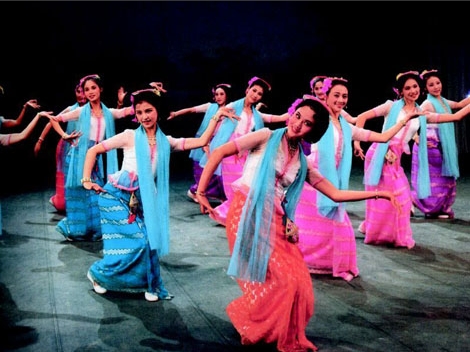
The river valleys and plains in the south and west of Yunnan Province are home to most ethnic minorities in the province. The areas where the Dai ethnic people live are mainly in tropical or subtropical zones that are best known for the warm weather, luxuriant mountain forests and abundant products. These geological features are fully reflected in the Dai ethnic clothing, which is beautiful and quietly elegant and at the same time, comfortable to be worn and in good taste. The clothing is nothing short of a statement of the Dai people's love of life and their pursuit of moderate beauty.
The clothes for men are pretty much the same in different areas. The upper garment is usually a front-opening collarless jacket or narrow-sleeved short jacket. The lower garment is a pair of light-colored, broad-waist, and pocket-less pants. Most men use white or cyan cloth to wrap the head, with some wearing a woolen hat. They have a blanket over their shoulders when it's cold. The Dai men are bare-footed all the year round. Their clothes are light and comfortable for doing farm work and look elegant and smart when the wearer is dancing.
The Dai women tend to pay special attention to their clothing, focusing on light, beautiful, simple and elegant dresses as well as on the perfect match of colors. Their upper garment is a tight-fit undershirt that comes in different colors and a light-color front-opening jacket with narrow sleeves over the undershirt. The lower garment is a flowery straight skirt with various woven patterns.
The Dai women wear their long hair into a coil, with a comb, hairpin or fresh flower in the coil at a tilt for adornment. They love wearing jewelries, which are usually made of gold or silver. Most of the jewelries are hollow inside, carved with elaborate patterns and motifs. In addition, the Dai women wear an exquisite silver belt around their waist. It is said that the belt is very precious and would be handed down from mother to daughter for generations.
The Dai ethnic clothing brings out the slim and graceful figure of the Dai women and the unconstrained manner of the Dai men.